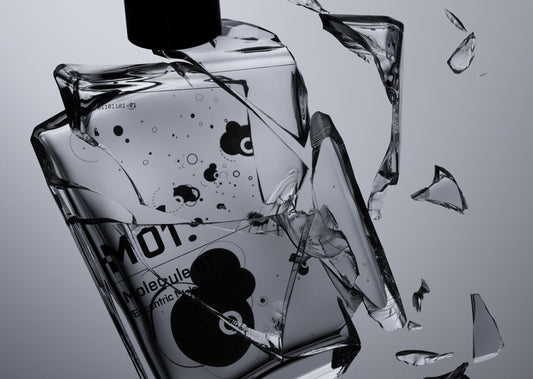For me modern fragrance is not about what you put in, it’s about what you leave out. In the Molecule fragrances I leave out everything except a single aroma-molecule. But the Escentric fragrances are also about leaving something out: the heart.

You can add any out-there ingredient you like, but if you want real innovation you have to experiment with structure. Most perfumes are structured in the traditional pyramid of top, heart and base notes. Nothing wrong with that except it feels old-fashioned. I like to pluck out the heart and create a new dynamic between the top notes and the drydown.
I like to pluck out the heart and create a new dynamic between the top notes and the drydown
Pretty much every fragrance out there has a massive dose of the same old, same old flowers in the heart. Jasmine, rose, lily of the valley, tuberose ... I love to smell these kinds of flowers in nature for the few weeks they bloom each spring or summer. But when it comes to fragrance I am not sweet at heart. I like to smell flowers, not smell of flowers.
A mainstream dose of roaring florals would kill this interplay
Ripping out the heart gives more spaciousness to a fragrance. Instead of a big heart my fragrances have a big top note. The goal for me is always to bring some of that top note freshness all the way into the drydown, aerating the fragrance. Take basil oil. Yes it’s a herbaceous green top note, but it has something in it that lasts and so can filter down to play in the base. Or take incense, it’s a base note, but at the right proportion it can already have an effect in the top. A mainstream dose of roaring florals would kill this interplay between top and drydown.
I’m interested in deconstructing the traditional scent-structure of a flower. A classic tuberose base has 10-15 ingredients. 80-90% of that I can throw out. But there are a few of those elements I wouldn’t want to live without. I prefer the fractions of a flower that are transparent. That’s why I love hedione, a nature-identical molecule first found in jasmine buds.

I prefer the fractions of a flower that are transparent
In perfumery it’s all about proportion. So while I’m not about to start slinging in the usual dose of florals, I like to use a trace of them. Naturals give a creaminess that nothing else can match. For this I use orris, a product extracted from the rhizome of the Florentine iris. Or I might include a few grams of osmanthus or mimosa absolue. Not enough so you can identify them, just enough to bring that magic. Lets say a very light, transparent ghost of a heart remains.



